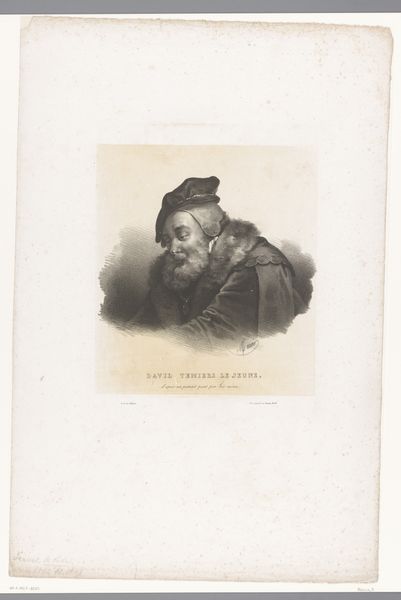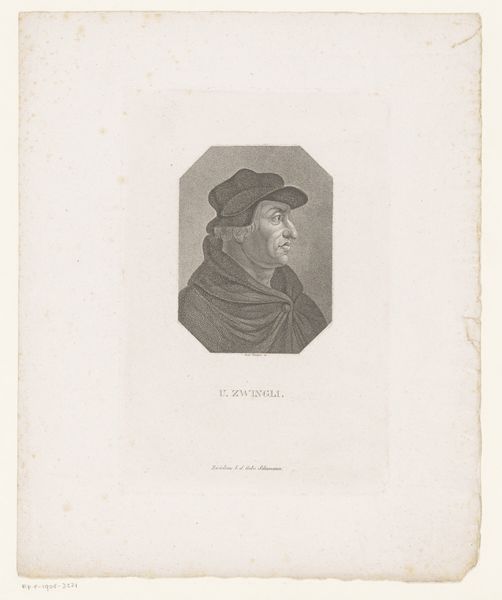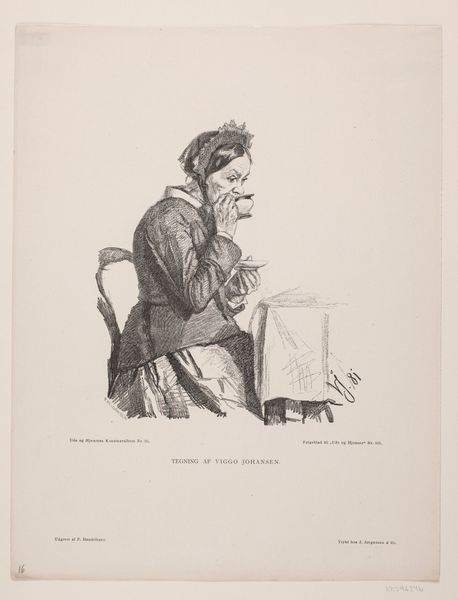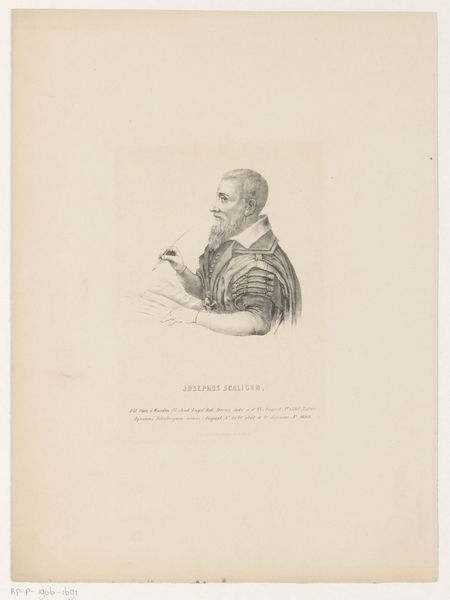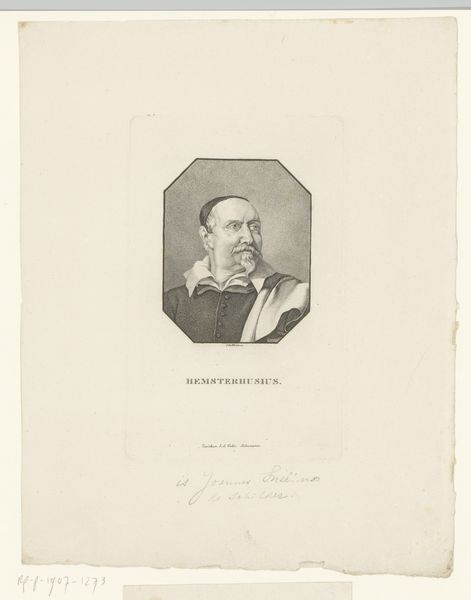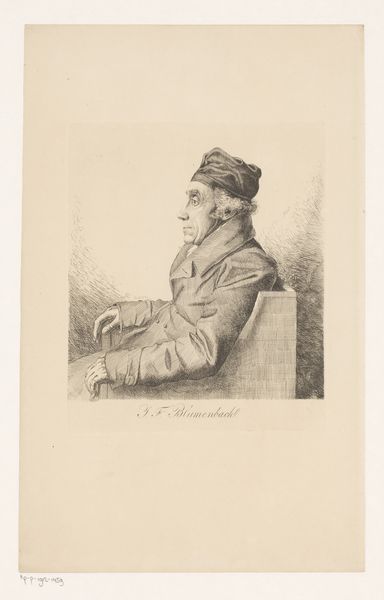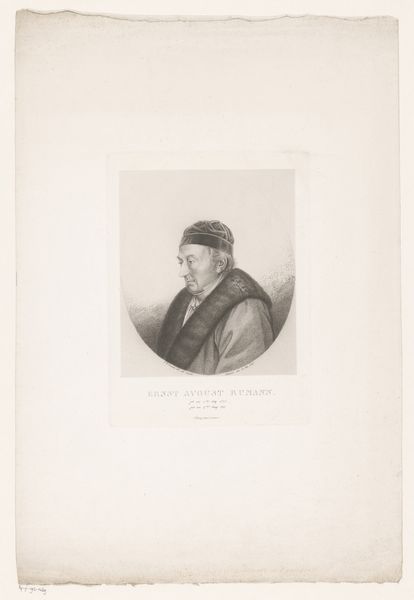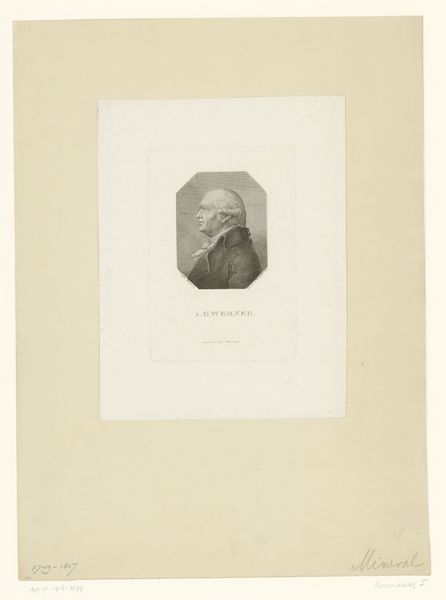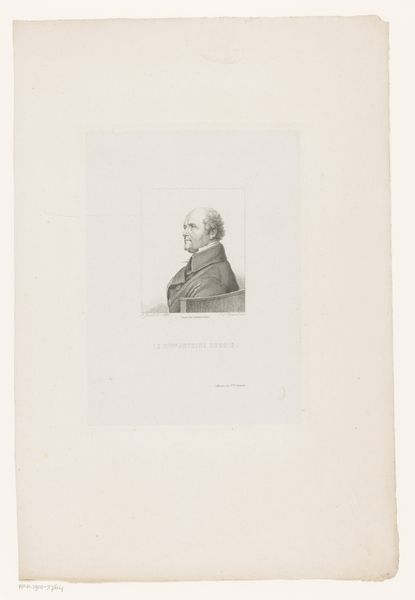
drawing, print
#
portrait
#
drawing
# print
#
romanticism
#
academic-art
#
realism
Dimensions: height 330 mm, width 263 mm, height 502 mm, width 383 mm
Copyright: Rijks Museum: Open Domain
Curator: This is "Portret van David Teniers (II)", a drawing and print made by M. Pinte between 1828 and 1829. Editor: The texture alone suggests a heavy material, like charcoal, doesn't it? The weight of that fur collar, the man's posture... there's a real gravity in its making. Curator: Yes, and it reflects the conventions of Romanticism and Academic Art of the era. Consider Teniers' place within the societal landscape—a portrait serves not only as an image, but also a declaration of identity. We can consider questions of representation here, thinking about how power dynamics shape this depiction. Editor: The realism is also undeniable. Think of the printmaking process. Look closely at the way Pinte created those different tones in the beard. The level of skill demanded control over tools, and an awareness of ink, pressure, and paper quality. It embodies artistic labor. Curator: Precisely. Teniers’ status surely informed how M. Pinte chose to portray him. The gaze averted downward lends to an interpretation of humility. Consider the possible social commentary on artists’ roles that is conveyed through its style. Is it upholding or critiquing? Editor: Interesting point. I'd argue there’s inherent worth simply in the skill required to realize such a detailed reproduction of a person. The material conditions in which it was made give access to artistic values of the time. It is a celebration of craftsmanship. Curator: I see your point. The intersectional questions surrounding who gets immortalized in art, by whom, and with what resources remains potent. We need to continuously analyze the societal forces at play. Editor: Yes, absolutely. By engaging with these prints, we understand something important of the networks of labor, skill and the flow of images in 19th-century art. It is through the examination of material and production that new interpretations arise. Curator: I appreciate that tension between what’s rendered and the act of rendering it, the constant play between the image and the social structure within its context. Editor: Absolutely. Paying close attention to the making of the piece shows us how the production itself reflects the artistic culture that created it.
Comments
No comments
Be the first to comment and join the conversation on the ultimate creative platform.
